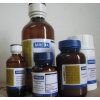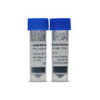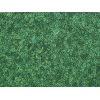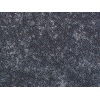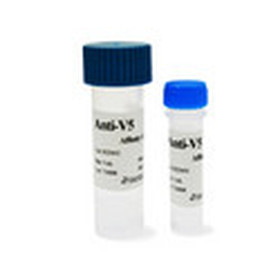
产品详情
Quantity size:
0.2ml
Concentration:
1mg/ml 流感病毒H3N7血凝素抗体 Buffer = 0.01M TBS(pH7.4) with 1% BSA, 0.03% Proclin300 and 50% Glycerol.
Background:
Hemagglutinin (HA) is a class I viral fusion protein from Influenza virus. It is a major glycoprotein, comprising over 80% of the envelope proteins present in the virus particle. HA binds to sialic acid-containing receptors on the cell surface, bringing about the attachment of the virus particle to the cell, and is responsible for penetration of the virus 流感病毒H3N7血凝素抗体into the cell cytoplasm by mediating the fusion of the membrane of the endocytosed virus particle with the endosomal membrane. The extent of infection into host organism is determined by HA. In natural infection, inactive HA is matured into HA1 and HA2 outside the cell by one or more trypsin-like, arginine-specific endoproteases secreted by the bronchial epithelial cells. The HA 流感病毒H3N7血凝素抗体protein is a homotrimer of disulfide-linked HA1-HA2. It also plays a major role in the determination of host range restriction and virulence. Genetic variation of hemagglutinin and/or neuraminidase genes results in the emergence of new influenza strains.
流感病毒H3N7血凝素抗体Also known as:
HA; Influenza A virus H3N7; hemagglutinin; H3N7; H3N7 hemagglutinin; Hemagglutinin HA1 chain; Hemagglutinin HA2 chain; C0RVD1_9INFA.
Specificity:
●
Rabbit Polyclonal IgG, affinity purified by Protein A.
●
Reacts with: Influenza A virus H3N7.
●
Immunogen: KLH conjugated synthetic peptide derived from Influenza A vi.
●
Predicted Molecular Weight: 63kDa.
流感病毒H3N7血凝素抗体Storage:
Shipped at 4℃, Store at -20℃ (Avoid repeated freeze/thaw cycles).
Application:
WB=1:100-500 ELISA=1:500-1000 IHC-P=1:100-500 IHC-F=1:100-500 ICC=1:100-500 IF=1:100-500
Not yet tested in other applications.
Optimal working dilutions must be determined by the end user.
Quantity size:
0.2ml
Concentration:
1mg/ml Buffer = 0.01M TBS(pH7.4) with 1% BSA, 0.03% Proclin300 and 50% Glycerol.
Background:
Hemagglutinin (HA) is a class I viral fusion protein from Influenza virus. It is a major glycoprotein, comprising over 80% of the envelope proteins present in the virus particle. HA binds to sialic acid-containing receptors on the cell surface, bringing about the attachment of the virus particle to the cell, and is responsible for penetration of the virus into the cell cytoplasm by mediating the fusion of the membrane of the endocytosed virus particle with the endosomal membrane. The extent of infection into host organism is determined by HA. In natural infection, inactive HA is matured into HA1 and HA2 outside the cell by one or more trypsin-like, arginine-specific endoproteases secreted by the bronchial epithelial cells. The HA protein is a homotrimer of disulfide-linked HA1-HA2. It also plays a major role in the determination of host range restriction and virulence. Genetic variation of hemagglutinin and/or neuraminidase genes results in the emergence of new influenza strains.
Also known as:
HA; Influenza A virus H3N7; hemagglutinin; H3N7; H3N7 hemagglutinin; Hemagglutinin HA1 chain; Hemagglutinin HA2 chain; C0RVD1_9INFA.
Specificity:
●
Rabbit Polyclonal IgG, affinity purified by Protein A.
●
Reacts with: Influenza A virus H3N7.
●
Immunogen: KLH conjugated synthetic peptide derived from Influenza A vi.
●
Predicted Molecular Weight: 63kDa.
Storage:
Shipped at 4℃, Store at -20℃ (Avoid repeated freeze/thaw cycles).
Application:
WB=1:100-500 ELISA=1:500-1000 IHC-P=1:100-500 IHC-F=1:100-500 ICC=1:100-500 IF=1:100-500
Not yet tested in other applications.
Optimal working dilutions must be determined by the end user.

